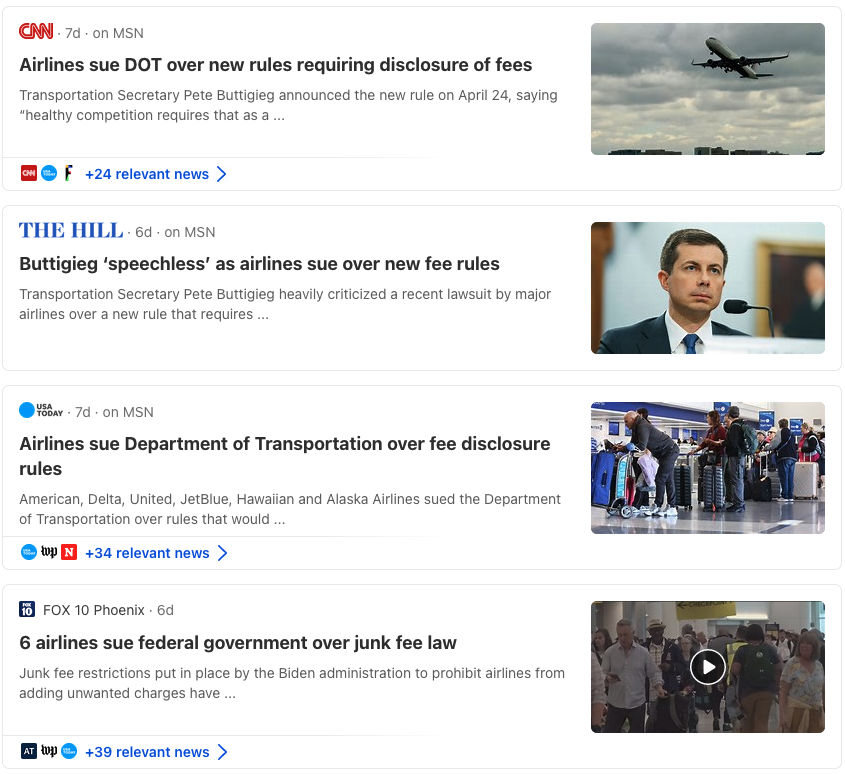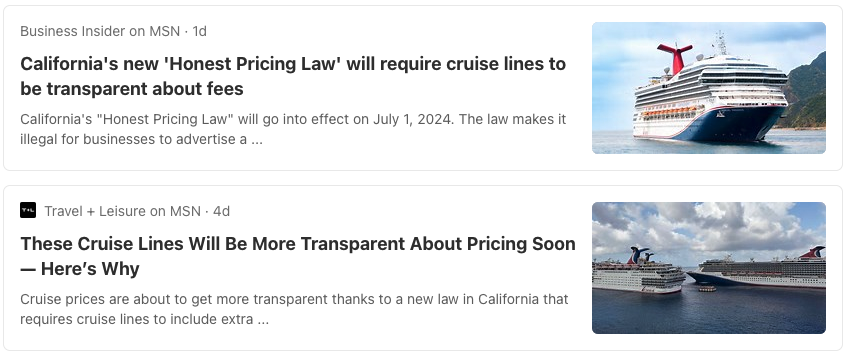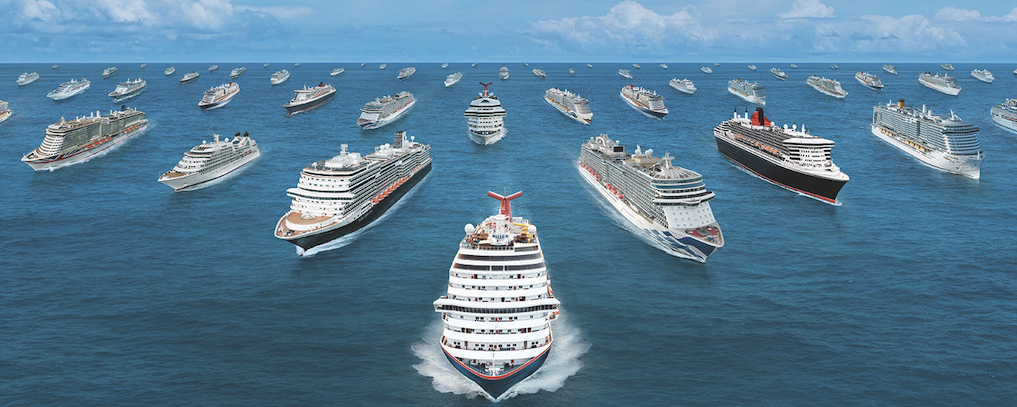Give one point to the cruise industry, and take one away from the airlines.
Whether you fly or take a cruise, there are lots and lots of taxes and fees that you typically don’t immediately see when they’re offering flights for $159 or cruises for $590; they don’t show up until just before you’re ready to make a payment.
What we pay in airline fees
We’ve already discussed how much you pay in taxes and fees for every domestic flight out of the US. But those are just “required” fees…there are plenty of fees, some optional, some not, that the airlines throw in. These are the airlines that charge the most.
What we pay in cruise fees
Just like airlines, cruises require us to pay certain taxes and fees. For a cruise Joe and I are taking this fall, the price was $6850.00. We did get various discounts that added up to $1786.00, and then taxes and fees were added on—they were an extra $248.00.
Like airlines, most cruise lines have lots and lots of “optional” and “not so optional” costs that can get tacked on. Gratuities. Alcohol packages. Wi-Fi access. Excursions. Stuff like that. Different cruise lines handle those charges differently. Take gratuities, for example – Virgin Voyages includes gratuities in what you pay. Some cruise lines allow you to add it in manually via credit card. And some give you little envelopes so you can pay via cash. But, except for Virgin Voyages, it’s still an add-on.
Transparency for airlines
The government has recently told airlines that they need to be more transparent when quoting prices. They want the airlines to let passengers know up front how much all those taxes and fees will cost for the myriad of things they may now charge for, as applicable: checking bags, bringing a carry-on bag, choosing your seat (and that you don’t *have* to choose your seat), change fees, etc.
The airlines’ response to this has been to sue the government, saying such transparency would “confuse” passengers.
 They’re so full of it. They just know that if they say a flight is $159 and by the time they’re done with all their fees, passengers would actually be paying $259, passengers might look elsewhere.
They’re so full of it. They just know that if they say a flight is $159 and by the time they’re done with all their fees, passengers would actually be paying $259, passengers might look elsewhere.
Transparency for cruise ships
Meanwhile, California’s Senate Bill 478, a.k.a. an “Honest Price Law” is going to start on July 1st. When the law goes into effect, cruise operators will required to include the cost of taxes, port expenses, and any other additional fees passengers may be subjected to while on board…instead of tacking them onto the end.
 A press release from California’s attorney general said the price transparency law, “protects consumers from deceptive price advertising and allows them to make an informed decision by seeing the all-in price of goods or services up-front before they get the bill.”
A press release from California’s attorney general said the price transparency law, “protects consumers from deceptive price advertising and allows them to make an informed decision by seeing the all-in price of goods or services up-front before they get the bill.”
(The law will apply to more than just cruise lines. According to the state’s FAQ about the upcoming law, “the law applies to the sale or lease of most goods and services that are for a consumer’s personal use. For example, it applies to event tickets, short-term rentals, hotels, restaurants, and food delivery, just to name a few prominent industries.”)
The difference between airlines and cruise companies
And what was the big difference between the airlines’ response and that of the cruise companies? The cruise industry didn’t whine like babies, say it was too hard for people to understand, and sue. They just shrugged and said, “OK.”

PC: Carnival Corp.
And so, effective July 1st, operators including Royal Caribbean International, Carnival Cruise Line, Celebrity Cruises and Princess Cruises will include the cost of port expenses, taxes and other fees in the price that potential passengers see. Oh, and not just for potential passengers in California, but everywhere.
“While this is a California state law, we are making this change nationwide to ensure our advertised pricing is consistent no matter where guests shop for our cruises,” Carnival Corporation spokeswoman Jody Venturoni said in a statement. Princess, Holland America Line and Cunard are all under the Carnival umbrella. The total advertised price would include the mandatory extras that have previously been “itemized separately for consumer awareness.”
Royal Caribbean already has a FAQ on their web page that explains how the new pricing will work. Norwegian Cruise Line is still working out how they will implement the new changes. Disney Cruise Line, as well as a few other higher-end cruise lines, already include taxes, fees, etc., in the prices they show upfront.
Apples and oranges
Granted, the DOT is telling airlines to disclose more things than what California is telling cruise lines to be transparent about. But that may be because cruise lines don’t charge you for things like checking a bag (or charge you more to check it at the port). Maybe if airlines didn’t charge so many extra fees, and make some of them more difficult to discover until it’s too late, they wouldn’t be so “confusing.”
Want to comment on this post? Great! Read this first to help ensure it gets approved.
Want to sponsor a post, write something for Your Mileage May Vary, or put ads on our site? Click here for more info.
Like this post? Please share it! We have plenty more just like it and would love it if you decided to hang around and sign up to get emailed notifications of when we post.
Whether you’ve read our articles before or this is the first time you’re stopping by, we’re really glad you’re here and hope you come back to visit again!
This post first appeared on Your Mileage May Vary
